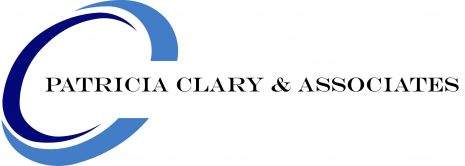Have you given thought to what constitutes a community? Or if community matters? Or, even better, how you connect and interact with your community? Community is all-encompassing of its citizens, models of society, governance, community development, civic and social justice engagement, businesses, amenities, resources, culture, values, and beliefs. In the greater Ozark region, where I reside in Arkansas, a state in the United States, we value farming, agriculture, tourism, economic development, education, business, our student population, sports, faith, family, and generosity of spirit. These elements of community interconnect with one another; as we come together to make the place we call home a better place to live and work for ourselves but, more importantly, for our children and future generations who follow in our steps. Peter Block (2008) wrote, “The social fabric of community is formed from an expanding shared sense of belonging.” In this state of belonging, in community, we come together to solve issues or complex societal problems that plague our community.
It comes as no surprise that as a nation, we live in unprecedented times of challenge, conflict, and even chaos as citizens clamor for their rights, their voices to be heard, and for fairness, equity, and inclusion in policies and procedures that affect them and their quality of life. Individualism, a value Alexis de Tocqueville described as distinctly American in Democracy of America, is embodied in our Declaration of Independence as the pursuit of happiness. This spirit of independence, though, can lead to silos of people and special interest groups where the sense of belonging in community can become nonexistent. In silos, people, special interest groups, and nonprofit organizations do not work toward the ‘common good’ of all people, but rather, they work toward a privatized agenda, whether private, public, nonprofit, or cross-sector based (Clark et al., 2020; Clary, 2022; Edmonson et al., 2012; Marek et al., 2015; Shier & Handy, 2020).
How do we move beyond silos and privatized agendas? How do we as a community come together to make a difference and bring transformative restoration that can be a game-changer for future generations and, in essence, leave the place where we live and work better than when we found it?
I suggest it is in collaboration, in community, where change occurs, citizens find belonging, and issues of complexity to local or global societies are addressed. In collaboration, strategic partnerships form. These strategic partnerships encompass citizens, civic and government agencies, nonprofit organizations, voluntary action associations, faith-based organizations, first responders, political, social, and educational organizations and institutions, and for-profit businesses that work together for the common or public good of a community and its citizenry.
Mother Teresa explained community this way: “I alone cannot change the world, but I can cast a stone across the waters to create many ripples.” And Helen Keller said, “Alone, we can do so little; together, we can do so much.” As we cast our stones across the water in community, we realize community does matter. Community can be transformative. Community can be restorative.
In corporate America, Corporate Social Responsibility has given way to a management concept where companies integrate social and environmental concerns in their business operations and interactions with their stakeholders. Corporate social responsibility demonstrates a business’s role in improving the world and community. Increasingly, corporate America is forming strategic partnerships in community to solve complex local and global social and environmental issues.
Community Matters explores the nonprofit community. It is a series about solving local and global societal issues through the lens of the nonprofit sector and community stakeholders for the community’s common good. The series begins with the nature of the nonprofit sector, its economic impact, its work, the difference nonprofit organizations make, and the purpose served in the community. In the coming weeks, collaboration, the barriers and benefits, and how collaborative efforts form whereby increasing the shared resources and philanthropic value of a nonprofit organization are discussed. The series features principles for convening diverse stakeholder groups and best practices in convening leadership. Throughout the series, nonprofit stakeholders can consider how to conduct business differently through governance, collaboration, and convening leadership because community matters.
In Community,
Dr. Pat
Dr. Patricia A. Clary is a syndicated columnist who consults with nonprofit and business sector partnerships that promote strategic community impact agendas to solve complex societal issues through governance, collaboration, and convening leadership. Connect with Dr. Clary patriciaclary.com, LinkedIn https://www.linkedin.com/in/pat-clary/, Facebook PatriciaAClaryPhD, or at [email protected]. ©2023 All Rights Reserved.
Share This Story, Choose Your Platform!

Patricia A. Clary, Ph.D.
Columnist Community Matters / Collaboration / Convening Leadership / Governance / Systems-Thinking


